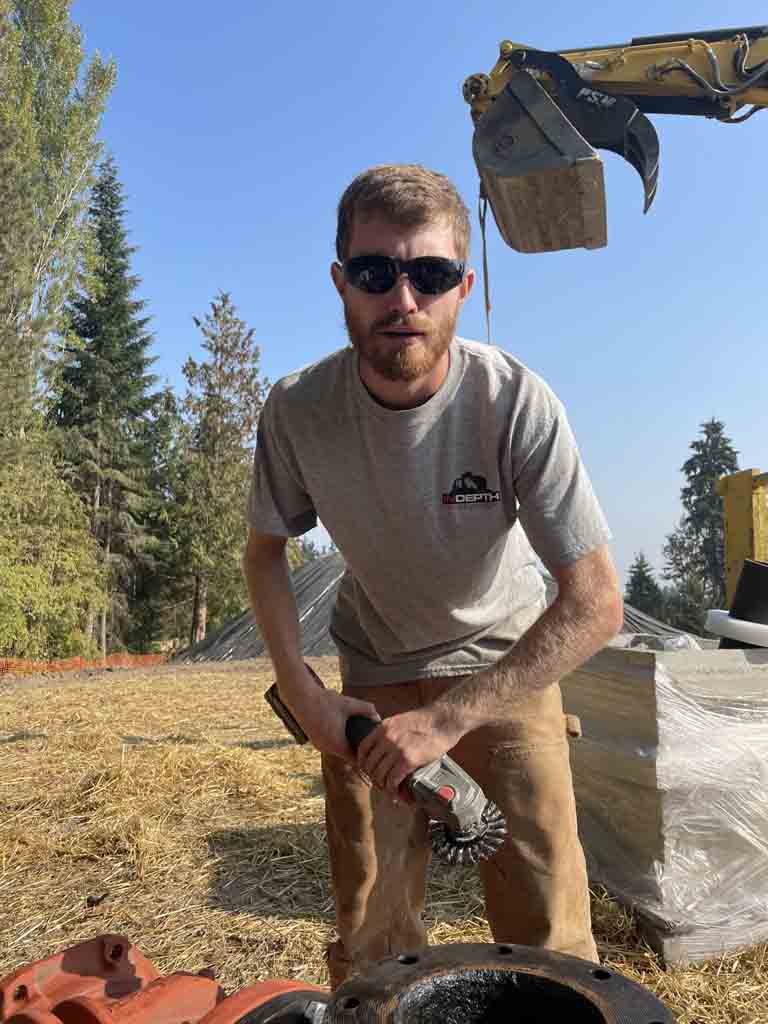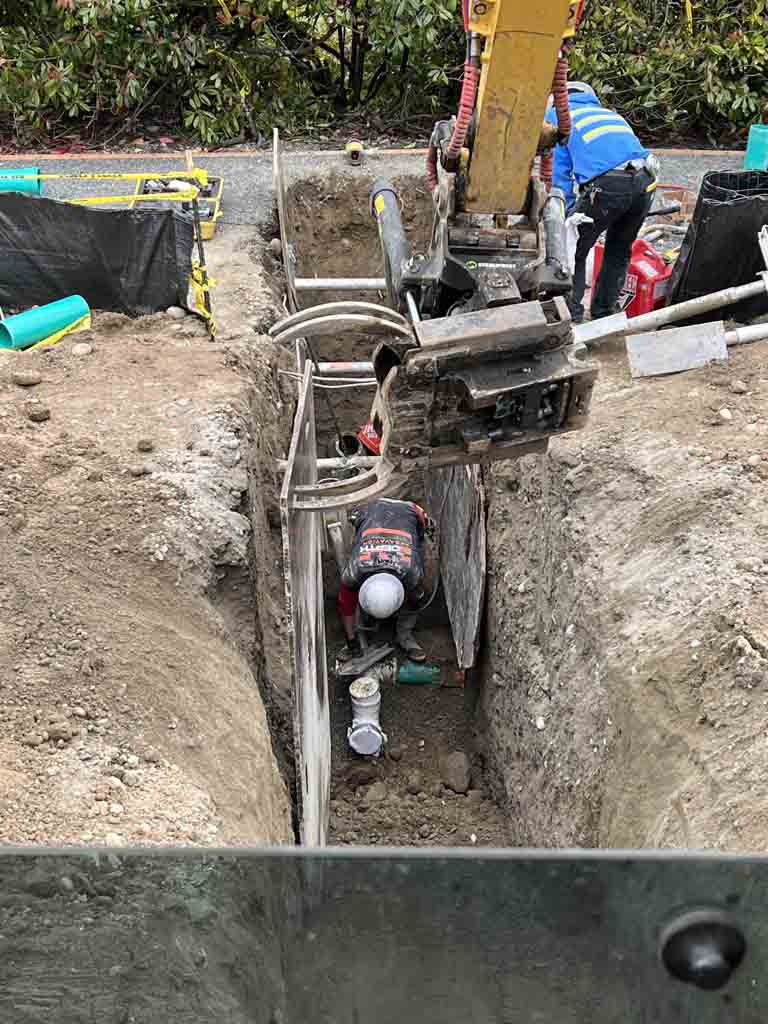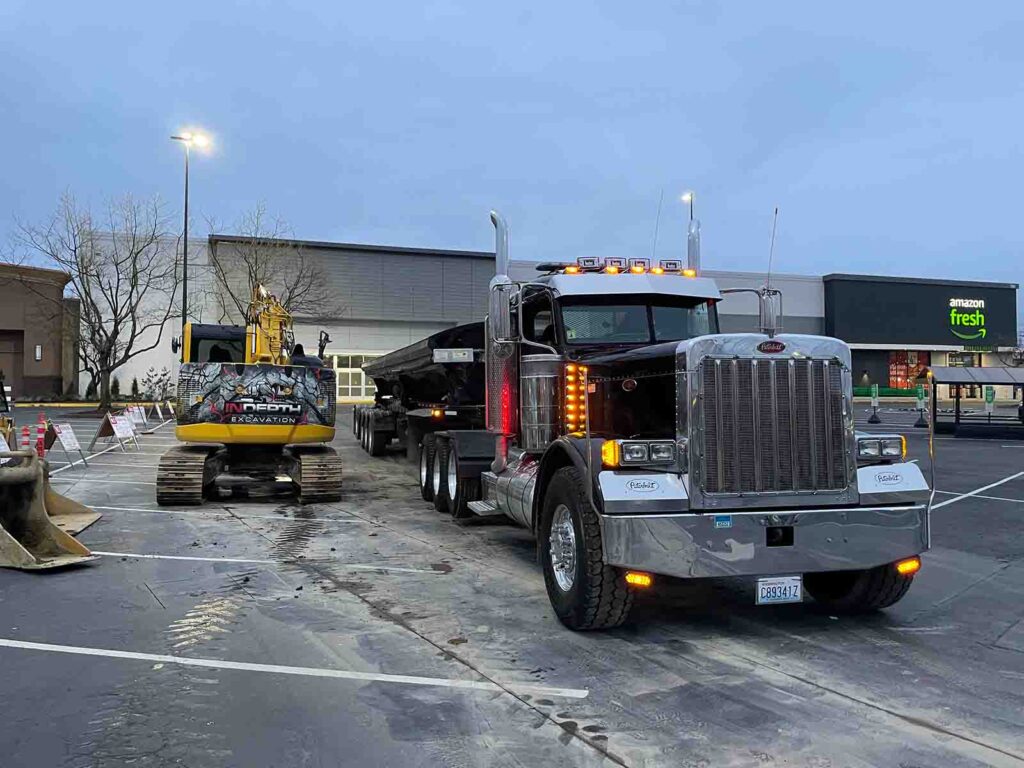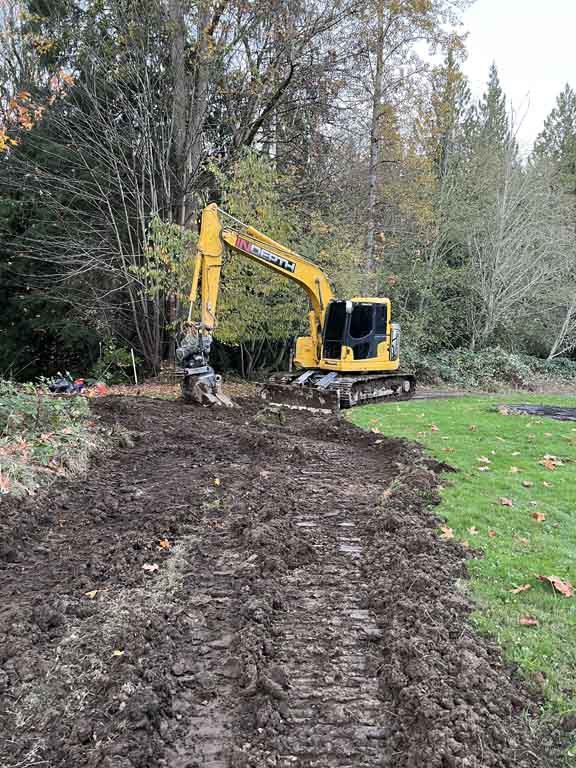EXCELLENTTrustindex verifies that the original source of the review is Google. When we first met with Dillon and explained the overall objective of our project he suggested multiple approaches and we were impressed with his big picture thinking. To be quite honest, I had trouble visualizing the end product, but Dillon continued to assure me to trust the process and he was 100% right. Dillon and his crew worked tirelessly over the course of the project and we really appreciated him fitting us in his busy schedule. We had a few scope changes/additions along the way that were not always at the right time but Dillon was willing to accommodate and we appreciate his patience with us! He was very communicative throughout the entire process and we're very happy with the end product. I'd not hesitate to recommend Dillon and In Depth Excavation!Trustindex verifies that the original source of the review is Google. Dillon and the team at In-Depth Excavation were very knowledgeable, professional and great to work with. They were thorough, on time and finished my drainage needs as promised. Their work is next level and even cleaned up, I mean they even swept the street in front of my house! I would definitely use them again and highly recommend them to anyone needing drainage installation, upgrade or repair. These guys are AWESOME!Trustindex verifies that the original source of the review is Google. They did good work, easy to work with and flexible when we ran into some changes. I would use them again and would recommend them.Trustindex verifies that the original source of the review is Google. I have nothing but praise for IDE! Once we got the scope of work and the pricing worked out, Dillon got his crew lined up very quickly and they got to work on our large drainage project before the next rain expected on the following Monday. Ivan ran the crew; they started Friday morning and worked through the weekend to try to finish before Monday. They almost made it, but they had to worka half day on Monday to finish. It looks great and best of all it works! Rain on Tuesday showed good water flow through the new system. Dillon's crew replaced the last system we had installed 3 years ago that failed in about 18 months. That guy refused to fix it and we're in litigation with him currently. I feel confident that we won't have those issues with IDE, but time will tell.Trustindex verifies that the original source of the review is Google. Dillon is THE only way to go! Best money spent! He is smart, skilled, and experienced. Takes very good care of you and goes above and beyond. Very personable. Great pricing, actually far better than 2 other guys who came out. I had massive backyard cleanup, bought a fixer upper house that was let go last 20yrs. Backyard was overgrown by blackberry, ivy, brush. 30hrs later, its clear!Trustindex verifies that the original source of the review is Google. We hired them to excavate and create a walkway thru our 2 acres of woods. They also cleared another area for a planned fruit orchard and cleared and created a pad for an above ground pool. They made quick work of it all too! They gave us exactly what we asked for at a reasonable rate. They even built a little cedar bench with some stumps and cedar plank. Then cut out a little seat from a tree they fell. Gotta love the little touches and considerations. Highly recommended!Trustindex verifies that the original source of the review is Google. Dillon was very responsive in helping us solve the drainage issue on my property. I was thankful for his quick turnaround time to schedule and execute the job. He even took the time to come out over the weekend to avoid additional flooding for an incoming storm early that week. I would recommend his services to family and friends.Trustindex verifies that the original source of the review is Google. Dillon and his crew were responsive and professional. Great communication and worked with us to best approach our project. Would definitely use again!

All of your Excavation Service needs in one place. Our team is always professional and time efficient with their Job. InDepth Ex has over 60+ years of combined experience.



All your Excavation Service needs in one place. Our team is always professional and time efficient with their job. InDepth Ex has over 60+ years of combined experience.




We make sure every client & Contractor happy that they called InDepth Excavation. We always get your excavation job done right the first time!



We make sure every client & Contractor happy that they called InDepth Excavation. We always get your excavation job done right the first time!




We offer a wide range of excavation services including digging, trenching, shoring, foundation work, site preparation, and the creation of retaining walls.
Our services are available in King County, Snohomish County, and Skagit County, Washington.
With over 60 years of combined experience and a commitment to professional, responsive, customer-focused service, we ensure high-quality outcomes using a wide range of excavation equipment.
Yes, we are equipped to handle all sizes of excavation projects, from small residential tasks to large commercial operations.
Safety is a top priority. We adhere to strict safety protocols and regulations to ensure the safety of our team and clients throughout the excavation process.
Customer satisfaction is our top priority. We maintain clear communication throughout the project, provide professional and responsive service, and ensure high-quality results that meet your expectations.
Yes, we are committed to environmentally friendly practices and aim to minimize environmental impact in all our excavation projects.
You can contact us at [email protected] or visit our office at 14751 N Kelsey St Ste #105, Monroe, WA 98272 for a personalized quote.
Project timelines vary based on the scope and complexity of the project. We provide a detailed timeline estimate after assessing the specific requirements of your project.